Clever and Cosy: Vernacular Architecture in the Himalayas
- Jane Orton

- Jul 30
- 8 min read
Updated: Aug 5
The distinctive, traditional mud-brick homes of Spiti Valley in the Indian Himalayas are climatically intelligent, earthquake-resilient and sustainable. Dr. Orton has been doing fieldwork in Spiti for over ten years. Here, she explores the profound connection between Tibetan Buddhism and local culture.
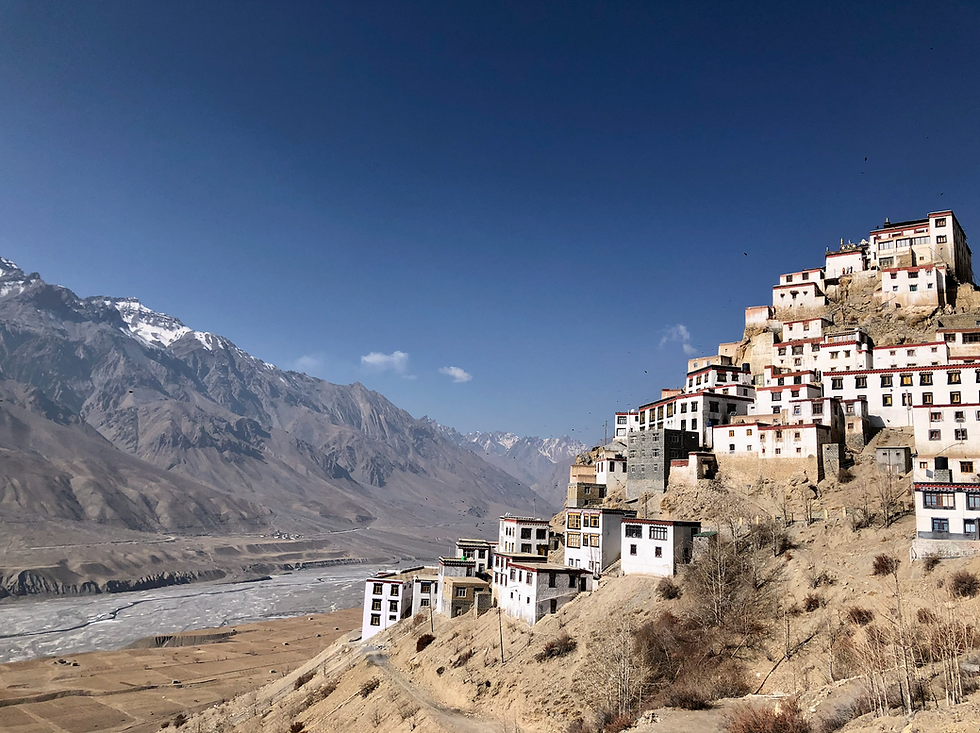
Visitors to Spiti Valley in India’s high-altitude Himalayas will notice the two-storeyed, flat-roofed mud houses nestled into the mountainsides and in the valleys. This is what architects and engineers describe as vernacular architecture: buildings constructed using local materials and techniques, shaped by centuries of cultural influences.
Vernacular architecture is becoming quite a talking point in Spiti. Recently, there has been a trend towards building homes from reinforced concrete because it’s perceived to be easier than building with mud or seen as a sign of social mobility, but now locals are questioning whether this is a good idea.
Lobzang Chopel, known locally as Lama Thamo, learned how to build mud-brick houses from his uncle when he was 15. He is now 77 and estimates that he has built more than 70 houses in Kaza.
Lama Thamo maintains that mud housing is better than concrete, because concrete is hotter in summer and colder in winter. Mud, on the other hand, provides a more comfortable temperature. Lama Thamo said that some people are tearing down their new concrete houses and building new houses with traditional techniques and materials.
A Traditional Spitian Home
A traditional house in Spiti might be two-storeyed with a flat roof, due to the fact that the area experiences very little rainfall. Stone foundations are laid, with wooden ceilings, frames and pillars and mud-brick walls. In domestic dwellings, these walls can easily be 19 inches wide or more; in monasteries, they are much wider. Houses are traditionally limewashed in white, although there are methods of making red and yellow colouring from clay minerals.
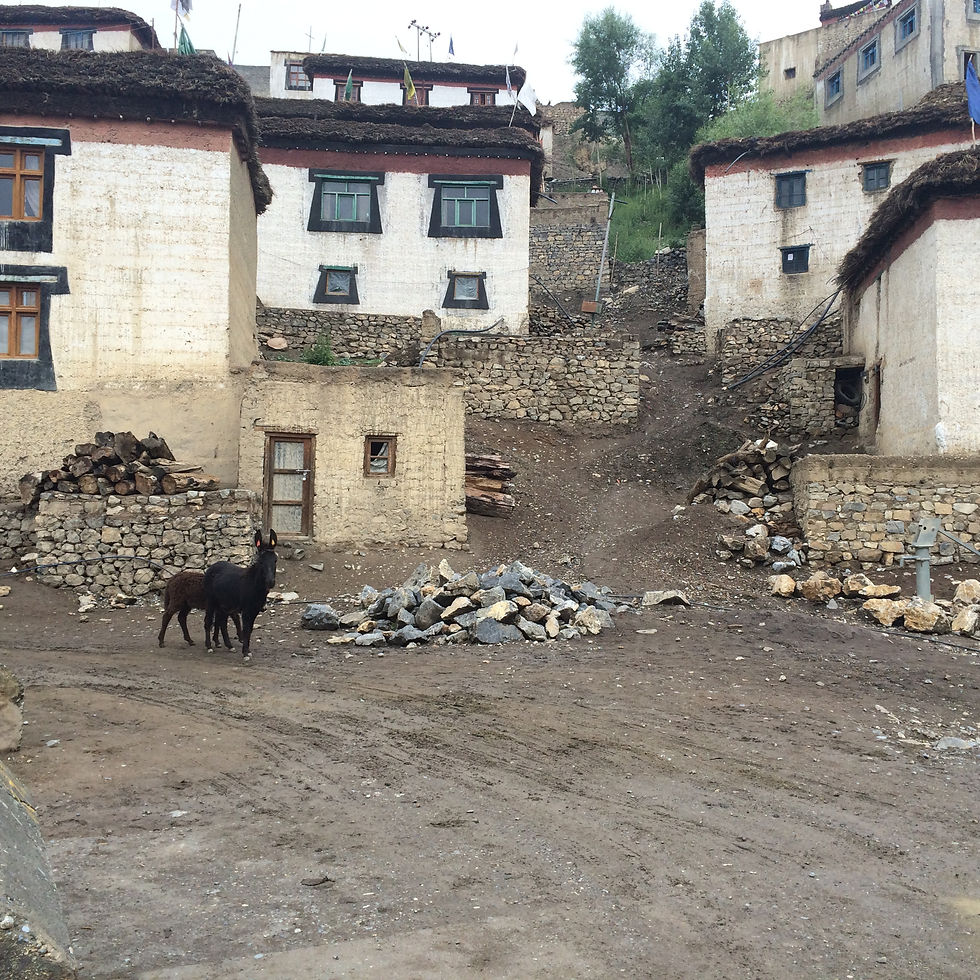
On the ground floor, you’ll find the zots (storerooms), lukraa (indoor cattle house) and yok-khang (winter room); on the upper floor is the ma-khang (main living room), shal-khang (solar room), chot-khang (prayer room), don-khang (guest room) and dhang-zey (open courtyard).
Traditional houses also have another very important feature: the chaksa (dry toilet). This is important because Spiti is a high-altitude desert and water management is a challenge. Unfortunately, locals feel under pressure to install flushing toilets to please tourists, but many tourists appreciate the sustainability and prudence of the traditional dry toilets!
Intelligent Insulation
Temperatures in Spiti might range from 30°C in summer to -30°C in winter and every aspect of traditional Spitian architecture is carefully planned out to account for this.
The upstairs floor of the home is the traditional living area in summer. This floor usually has larger windows and higher ceilings. In the winter, the downstairs yok-khang is the main living space. This room usually has a stove in the centre, which is used for both cooking and heating. I’ve had the good fortune to sleep in a room with a stove like this and it’s so cosy!
The zots (storerooms), are usually on the coldest side of the house, but yok-khang would be close to the lukraa so that the heat from the animals provides more insulation. The yok-khang usually has lower ceilings and small (or no) windows so that heat is not lost.
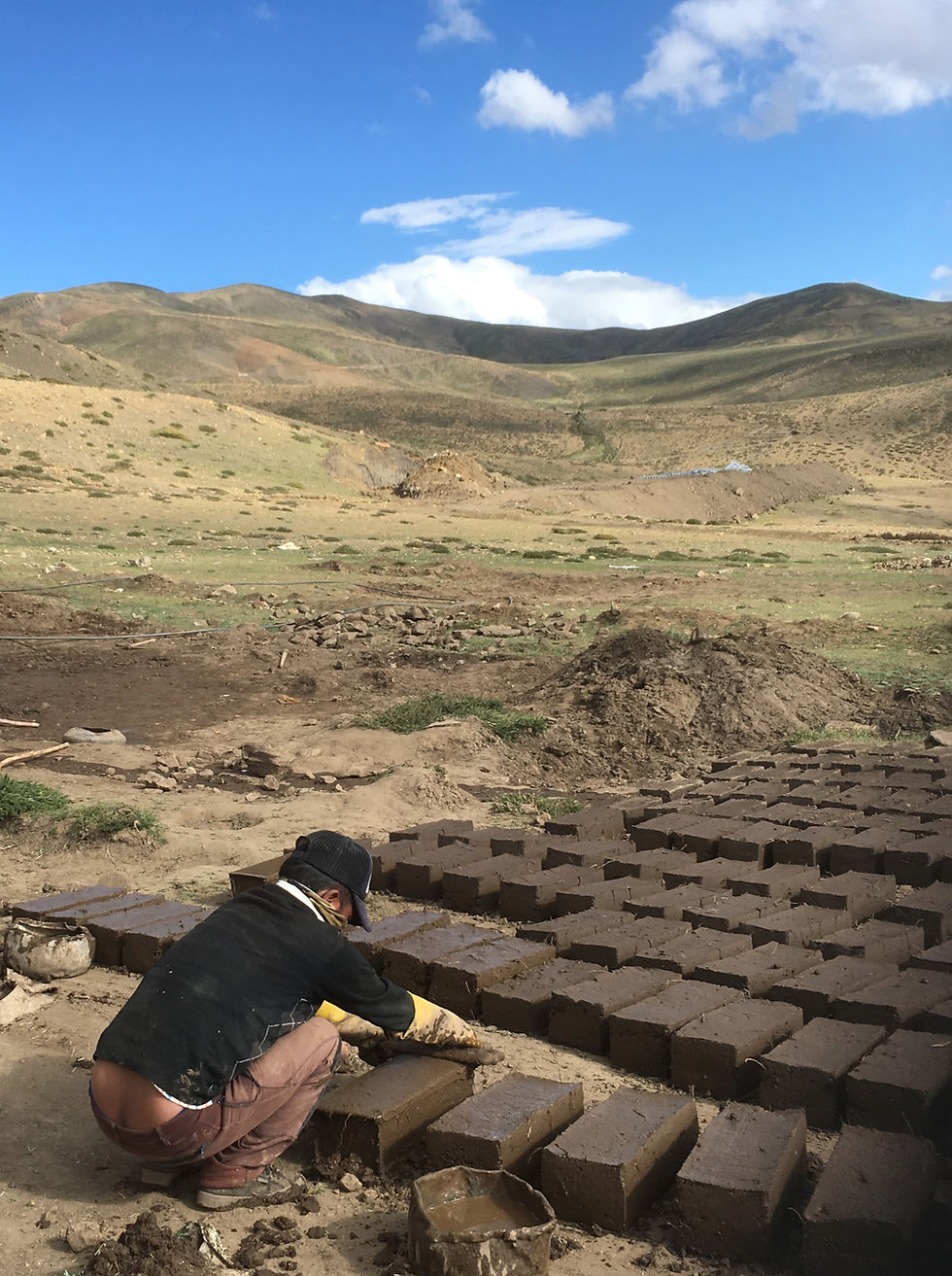
The use of mud is also important. In the Himalayas, there are two types of mud construction: rammed earth (where soil is taken from the ground and compacted to form structures) and sun dried mud bricks. While modern rammed earth is made through machines, traditionally the earth was “rammed” with bare feet (hence the name “rammed earth”). Tests have been run on these kinds of buildings: In Ladakh, which has similar vernacular architecture, inside temperatures are consistently 20°C even when the outside temperature drops to -20°C.
Houses also incorporate additional design features that maximise heat. Mud bricks act as thermal mass as they collect heat during the day and release it over time. Windows are placed intelligently, with large windows on the South-facing side to direct the heat of the sun.
Earthquake-Resistant
Spiti is in an earthquake region. The Himalayas were formed by the collision of the Indian subcontinent with the Eurasia plate forty-five to fifty million years ago. Some geologists think that the tectonic plate of the Indian subcontinent is still moving towards southern Tibet and so the Himalayas are still growing, resulting in frequent earthquakes. There was a major earthquake in Spiti in 1955, but the most recent big earthquake to affect Spiti significantly was in 1975: 6.2 on the Richter scale, with an aftershock of magnitude 5.8.
Mud brick engineering expert Paul Jaquin gave me the Earthquake 101: During an earthquake, the ground moves one way and the building “wants” to move with it. As the ground moves the other way, the building tries to form a parallelogram as the bottom of the building shifts with the ground and the top is left behind. This results in the building pulling itself apart as a result of inertia. A crack is formed, the crack propagates and the wall falls down.
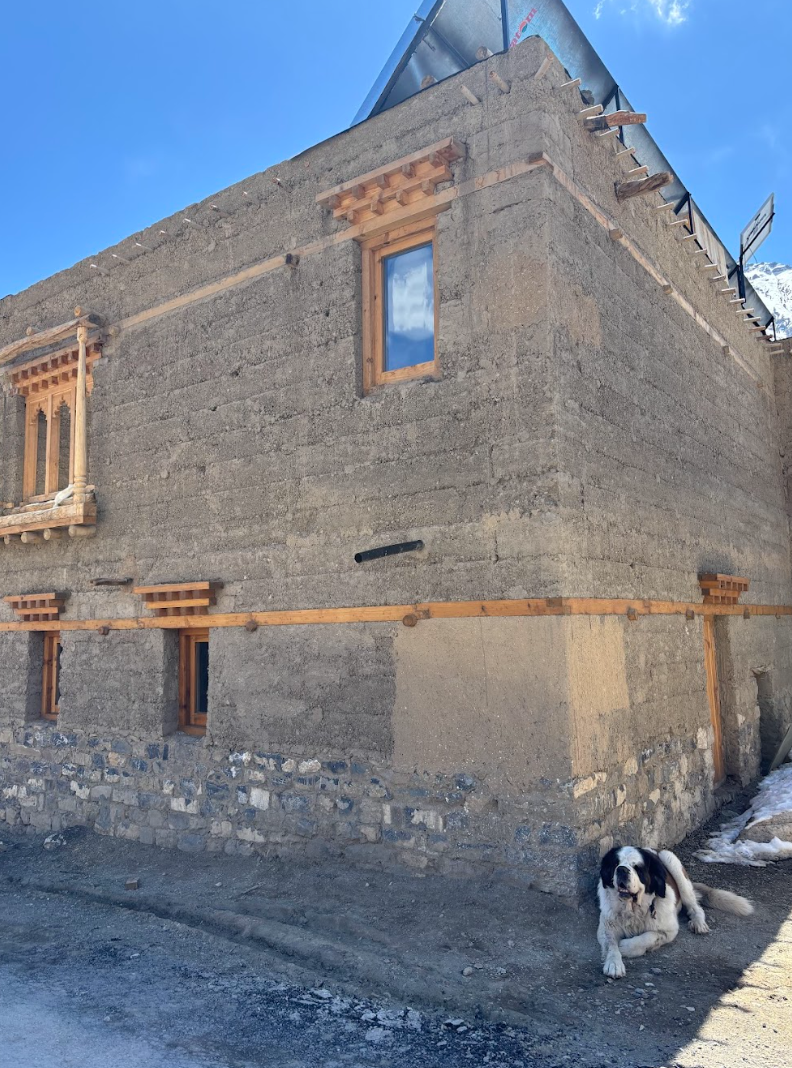
Earthquake resistance involves fixing perpendicular walls together with tie beams at various points through the walls to intercept those cracks and stop the cracks forming. Whereas mud bricks would just pull away from each other, wood will stay together better. Wood can be built into the building or it can be fitted afterwards. The traditional system of interlocking tie beams will move together to prevent the whole building from collapsing. This is found in many buildings in the area. At Tabo and Kee monasteries, mud-brick walls and traditional seismic tie beams were already present before the 1975 earthquake. After the earthquake, more earthquake-proof features were retrofitted.
Local Material
Concrete is the most popular construction material in the world, but it creates environmental problems. The first issue is that it takes a lot of energy to make because cement, the binding agent that holds the components of concrete (like sand and gravel) together, must be sintered (thermally treated) at very high temperatures. This leads to the second problem that the whole process gives off carbon dioxide. In Spiti, there is the additional problem that all these materials must be transported up the mountains, with additional carbon emissions and expense.
Traditional houses in Spiti use local material that can be reused even if the house is torn down. Mud is an abundant resource. Although trees are scarce in Spiti, local varieties are important in Spitian architecture. Willow might be used for fences, doors, window frames or the internal structure of a roof. Poplar might be used for makdung and burdung (support structures) or panels and juniper is used for door and window panels. Local shrubs such as pema sea buckthorn are also used. Lime from the area is used as a waterproofing agent, in a similar way to the limewashed pubs we still have here in Leicestershire.
There is also the possibility of using natural material like fennel seeds as a binding agent, which avoids many of the problems of reinforced concrete. As one Spiti resident, originally from elsewhere in India, remarked after learning about the process, “This is living material – this is not dead as concrete.”
Traditional Housing in Spiti’s Culture
The building and design of traditional houses are also very closely linked to Spiti’s cultural heritage. The internal pillars that support the structure are known locally as khas. These were traditionally wooden, although now iron is often used. Lama Thamo explained that this is a Buddhist tradition, which also takes place in Tibet. The kha is engraved, or, lately, painted with designs incorporating the eight lucky signs of Buddhism, such as a conch shell. The kha is also linked to important milestones in people’s lives. After a wedding, the ashe (ceremonial cloth) would be ties around the kha of the house.
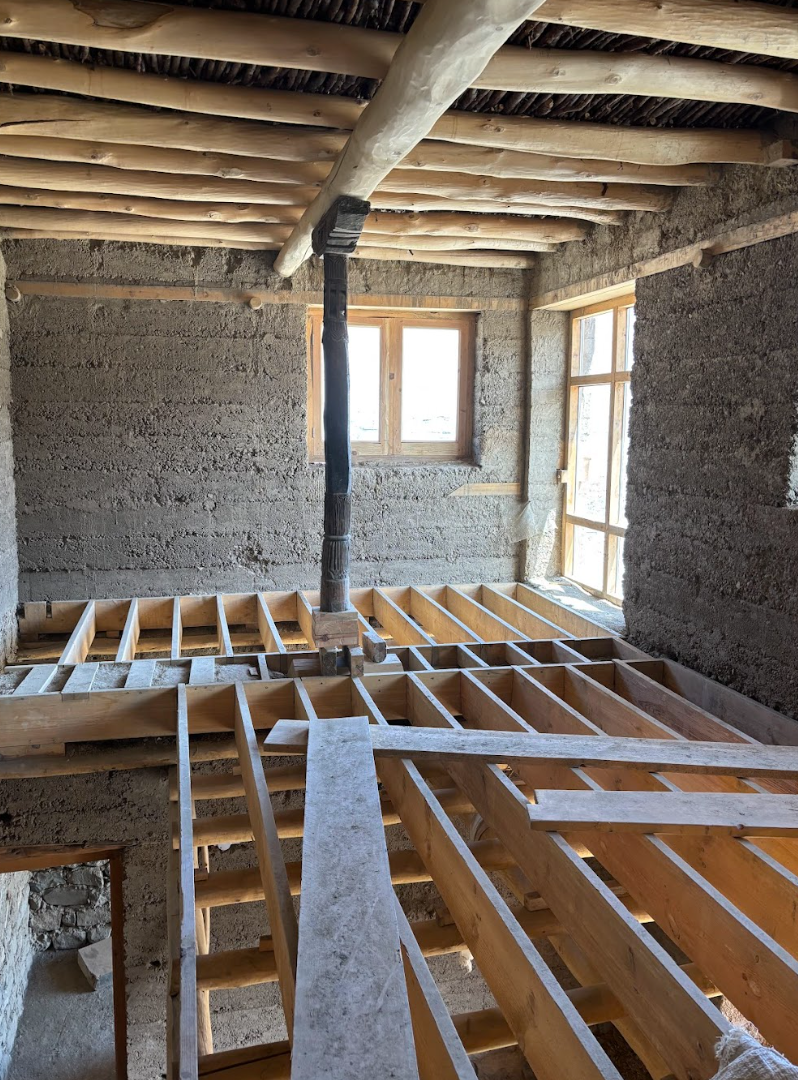
Other links with Tibet include the timing of the construction. I was told that it is advisable not to start any new buildings this year because this is the Year of the Snake in the Tibetan calendar, although projects that have already been started may be finished.
The supporting pillar for the roof of the house is called a markung and there is an interesting link with this feature and local folklore. Most villages in Spiti have their own lha, deity, which originates in pre-Buddhist tradition. The lha of Chicham is called Tamchen.
Chopel Tandup, who has the role of caretaker of the lha in Chicham, explained that Chicham’s lha used to be an iron smith. During Thamchen’s time in Tibet, he was involved in building Samye Monastery and it was said that whoever brought the makdung would be given great honour. Thamchen stored the makdung behind his ear like carpenters used to do with pencils and was given great honour.
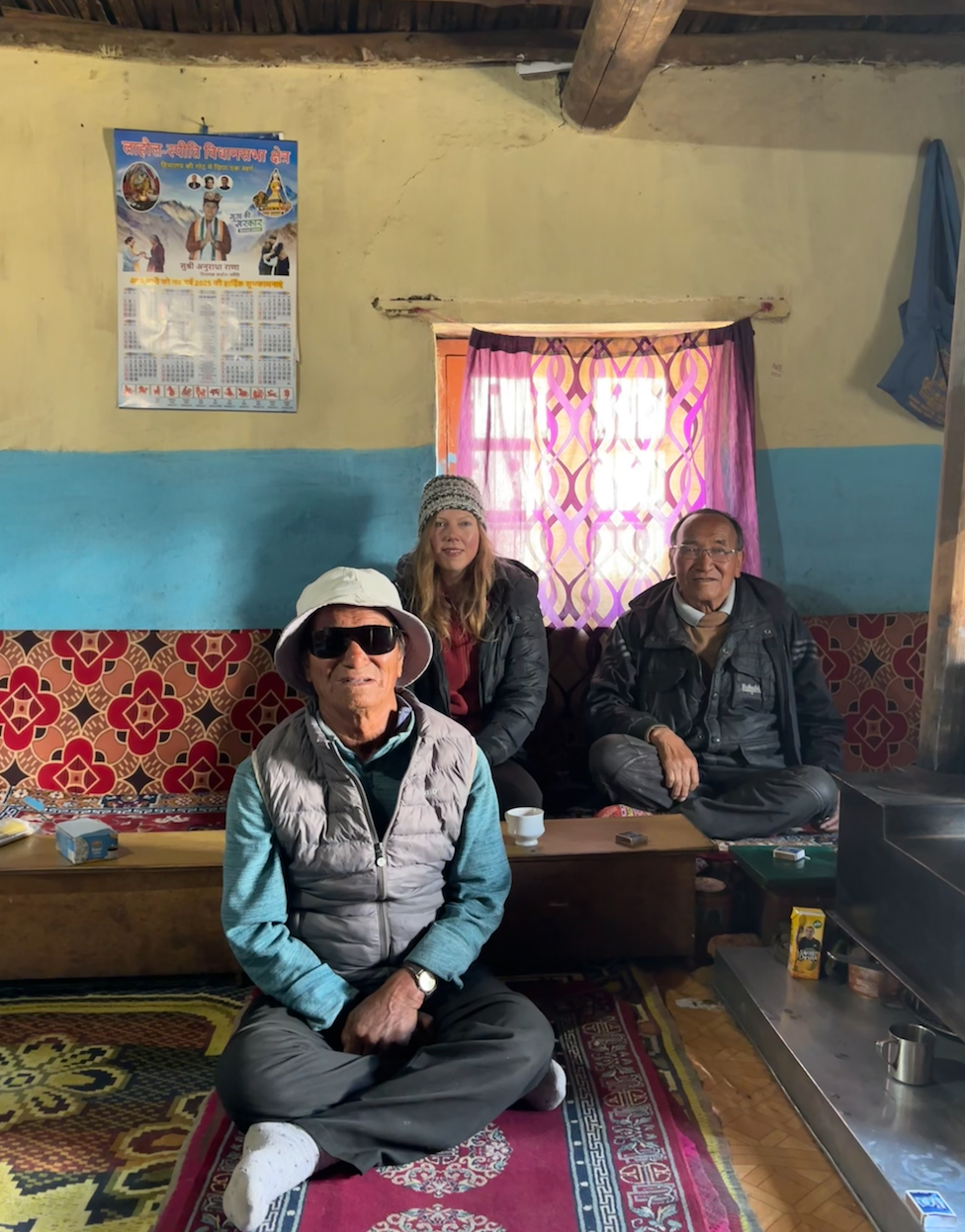
In one version of the story, the narrative continues that, when Chuekong Chen Mo, the lha of Langsa heard that Thamchen was in charge, he got greedy and asked Thamchen to hold his horse while he went back to the monastery. Chuekong Chen Mo pointed to Thamchen holding his horse and claimed that Thamchen was his servant, so the power was divided between them thanks to Chuekong Chen Mo’s trickery.
I’ve heard slightly different versions of this story in previous years in which the Kibber lha is the trickster. Click the link to read about Spiti’s evolving folk stories!
Find Out More
To learn more about Dr. Orton’s research in the Himalayas, click the link to read her blog posts in our People and wildlife in South Asia series! Dr. Orton has posts on the snow leopards of Spiti, legends of Spiti’s hidden lands, and Spiti’s history in the Tibetan Empire.
Also, don’t visit Spiti before reading what locals want you to know about how to go beyond the bucket list and find the real Spiti!
There are also academic lectures on Dr. Orton’s fieldwork in the Himalayas on our Research Page.
If you’re interested in tutorials with Dr. Orton, she offers online, one-on-one tutorials that are based around your learning or research needs. This ranges from ad hoc tutorials to gain an understanding of the academic literature, research proposal feedback and development, or regular, ongoing support. To find out more about the anthropology and folklore of the Himalayas, take a look at our Anthropology courses on Tibetan and Himalayan Studies, Himalayan Folklore and Religion of the Himalayas. Our interdisciplinary course on Culture and Conservation will give you an insight into the link between wildlife and anthropology.
These courses are templates of possible routes of study and can be combined, adapted, or designed from scratch to suit your interests and goals. Dr. Orton will work with you to design a course of private tutorials tailored to your needs, ability and schedule – whether you are undertaking your own research for an independent project, writing a book or simply have a personal interest. Click the link to find out what it’s like to work with Dr. Orton.
Contact us to find out more!
Undertake Your Own Research Project in Anthropology and Religious Studies
Working on your own independent research project needn’t be a lonely task: Dr. Orton works with other independent scholars on projects in conservation and the humanities. Contact us for a chat with her.
If you’re not ready to reach out yet, follow our research methods series on this blog for more ideas! Dr. Orton has written posts on the importance of independent research and how to get started with building your own approach to ethical, people-centred fieldwork.
Reach Out
Follow us on Orton Academy Instagram to see pictures from Dr. Orton’s fieldwork in the Himalayas and the Sundarbans – we would love to connect with you!




Comments